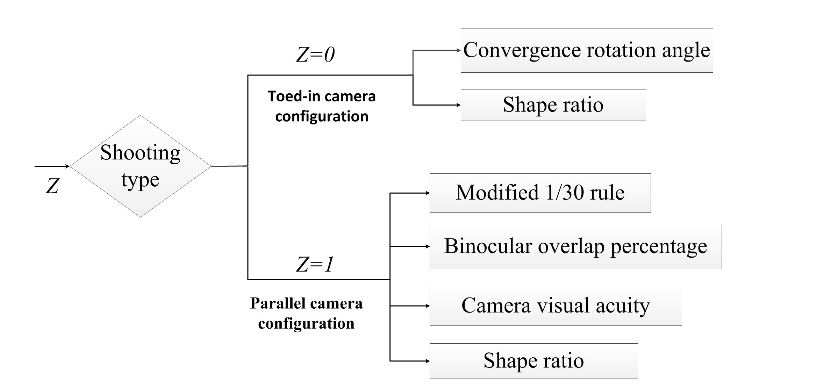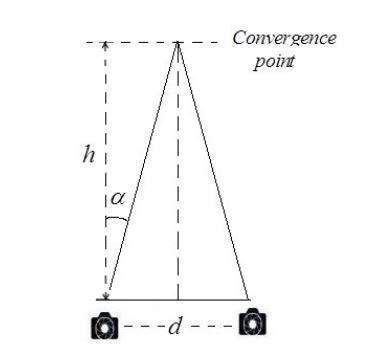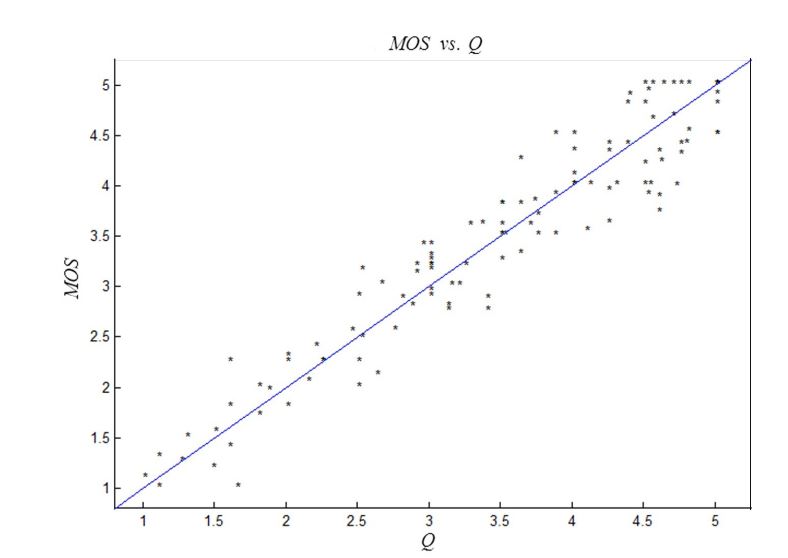ABSTRACT
The realization of the Internet of Things greatly depends on the information communication among physical terminal devices and informationalized platforms, such as smart sensors, embedded systems and intelligent networks. Playing an important role in information acquisition, sensors for stereo capture have gained extensive attention in various fields. In this paper, we concentrate on promoting such sensors in an intelligent system with self-assessment capability to deal with the distortion and impairment in long-distance shooting applications.
The core design is the establishment of the objective evaluation criteria that can reliably predict shooting quality with different camera configurations. Two types of stereo capture systems—toed-in camera configuration and parallel camera configuration—are taken into consideration respectively. The experimental results show that the proposed evaluation criteria can effectively predict the visual perception of stereo capture quality for long-distance shooting.
RELATED WORK
Currently, researchers have focused on the analysis of shooting principles to get an excellent stereo effect; for instance, Frederik et al presented production rules that were required for the acquisition of adequate stereo content through the study of the geometry of the 3D display, 3D capture and the stereo formula; Kim et al reported a visual fatigue metric that could replace subjective tests to evaluate image quality; further, the metric could also be used for filming and warning systems for general viewers; Kim and Sohn proposed a 3D reconstruction algorithm from a stereoscopic image pair through analyzing inter-camera distance, camera focal length and shooting distance; this method solved the mutual occlusion and interaction problems between real and virtual objects in an MRsystem; Lee et al.
SUBJECTIVE QUALITY ASSESSMENT EXPERIMENT ON STEREOSCOPIC CONTENTS

Figure 1. Real stereo camera schematic diagram
The mean opinion score (MOS) was firstly computed for each image by averaging all of the subjective scores. Then, we calculated the range of each influenced factor, which is further introduced in Section 4, and summarized the relationship between each factor and the MOS values. The experimental processes were repeated with the changing of the value of h. At last, we presented the total evaluation factor for toed-in and parallel camera configurations, respectively.
EVALUATION CRITERIA FOR STEREO CAPTURE

Figure 2. Objective stereo cameras’ shooting quality evaluation criteria for long distances
In addition, we found that the image quality was still good when the evaluation factor exceed the previous shooting guidelines. The previous shooting guidelines were empirical methods and could only generate a rough estimation and suggestion for the camera parameters. Therefore, this paper aims to establish a corresponding five-level evaluation criteria for stereo camera configurations over long-distance shooting, as shown in Figure 2. The semantic meaning of stereo camera parameters used in establishing the evaluation criteria is summarized in Table 2.

Figure 3. Computation of screen space disparities
Previous studies indicated that α had an effect on the screen disparity of a given point, while it referred to the distance between the two corresponding points in stereoscopic images recorded by the left and right cameras. The disparity was often the most important parameter for stereo depth perception and related to the most comfort-zone constraints. However, it was an empirical method and could only generate a rough estimation for camera parameters. Hence, this part of the whole aims to establish a corresponding five-level evaluation criterion of the convergence rotation angle for stereo cameras through subjective and objective experiments.
EVALUATION EXPERIMENTS

Figure 10. Schematic diagram of the correlation between quality score Q and subjective values MOS
According to Figure 10 and Table 10, we can conclude that the objective evaluation results of the proposed criteria are in accordance with those of the subjective evaluation. With the verification of subjective experimental results and theoretical analysis, the proposed criteria algorithm is applicable for evaluating the long-distance shooting quality of stereo cameras.
CONCLUSIONS
In this paper, we proposed the design of a self-assessment stereo capture model applicable to IoT for long-distance shooting. Serving as a major procedure in information acquisition, stereo capture plays a key role in determining the quality of stereo capturing-based content in IoT. Regarded as the core component of the self-assessment model, an objective evaluation criteria for long-distance shooting quality adapted to different stereo camera configures is fully investigated. Two types of stereo camera systems—toed-in camera configuration and parallel camera configuration—were taken into consideration respectively.
Experimental results indicated that the proposed evaluation criteria were consistent with people’s subjective perception and can be applied to the self-assessment of the stereo capture’s long-distance shooting quality. Instead of duplicate subjective tests, the design of the self-assessment capability can effectively predict the long-distance shooting quality and provides a better 3D effect in accordance to people’s subjective perception in a much easier way. In conclusion, the establishment of the evaluation criteria will not only lead to better shooting quality, but also provide a theoretical basis for the integrated stereo capture systems with self-assessment capability.
With this model, more reliable stereo image-based information can be used in the interaction between physical terminal devices, and the IoT will also benefit a lot from improved sensor networks. It is worth noting that a self-assessment stereo capture model that can compute its performance by using the provided criteria has been realized in the paper. However, there is still a lack of research on how to improve the performance. Further studies and analysis will focus more on the design of the stereo capturing system with the ability to adaptively adjust corresponding parameters to achieve better capture quality, if the system has only poor performance.
Source: Tianjin University
Authors: Yancong Lin | Jiachen Yang | Zhihan Lv | Wei Wei | Houbing Song